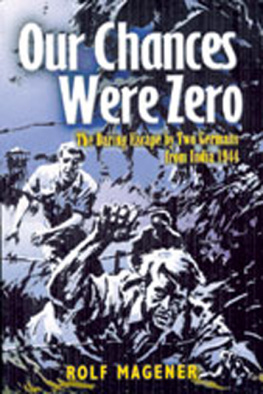Keith Warren Lloyd - The Great Desert Escape: How the Flight of 25 German Prisoners of War Sparked One of the Largest Manhunts in American History
Here you can read online Keith Warren Lloyd - The Great Desert Escape: How the Flight of 25 German Prisoners of War Sparked One of the Largest Manhunts in American History full text of the book (entire story) in english for free. Download pdf and epub, get meaning, cover and reviews about this ebook. year: 2019, publisher: Lyons Press, genre: Detective and thriller. Description of the work, (preface) as well as reviews are available. Best literature library LitArk.com created for fans of good reading and offers a wide selection of genres:
Romance novel
Science fiction
Adventure
Detective
Science
History
Home and family
Prose
Art
Politics
Computer
Non-fiction
Religion
Business
Children
Humor
Choose a favorite category and find really read worthwhile books. Enjoy immersion in the world of imagination, feel the emotions of the characters or learn something new for yourself, make an fascinating discovery.
- Book:The Great Desert Escape: How the Flight of 25 German Prisoners of War Sparked One of the Largest Manhunts in American History
- Author:
- Publisher:Lyons Press
- Genre:
- Year:2019
- Rating:5 / 5
- Favourites:Add to favourites
- Your mark:
The Great Desert Escape: How the Flight of 25 German Prisoners of War Sparked One of the Largest Manhunts in American History: summary, description and annotation
We offer to read an annotation, description, summary or preface (depends on what the author of the book "The Great Desert Escape: How the Flight of 25 German Prisoners of War Sparked One of the Largest Manhunts in American History" wrote himself). If you haven't found the necessary information about the book — write in the comments, we will try to find it.
Dramatic, highly readable, and painstakingly researched, The Great Desert Escape brings to light a little-known escape by 25 determined German sailors from an American prisoner-of-war camp. The disciplined Germans tunneled unnoticed through rock-hard, sunbaked soil and crossed the unforgiving Arizona desert. They were heading for Mexico, where there were sympathizers who could help them return to the Fatherland. It was the only large-scale domestic escape by foreign prisoners in US history. Wrung from contemporary newspaper articles, interviews, and first-person accounts from escapees and the law enforcement officers who pursued them, The Great Desert Escape brings history to life.
At the US Armys prisoner-of-war camp at Papago Park just outside of Phoenix, life was, at the best of times, uneasy for the German Kreigsmariners. On the outside of their prison fences were Americans who wanted nothing more than to see them die slow deaths for their perceived roles in killing fathers and brothers in Europe. Many of these German prisoners had heard rumors of execution for those who escaped.
On the inside were rabid Nazis determined to get home and continue the fight. At Papago Park in March 1944, a newly arrived prisoner who was believed to have divulged classified information to the Americans was murderedhung in one of the barracks by seven of his fellow prisoners.
The prisoners of war dug a tunnel 6 feet deep and 178 feet long, finishing in December 1944. Once free of the camp, the 25 Germans scattered. The cold and rainy weather caused several of the escapees to turn themselves in. One attempted to hitchhike his way into Phoenix, his accent betraying him. Others lived like coyotes among the rocks and caves overlooking Papago Park. All the while, the escapees were pursued by soldiers, federal agents, police and Native American trackers determined to stop them from reaching Mexico and freedom.
Keith Warren Lloyd: author's other books
Who wrote The Great Desert Escape: How the Flight of 25 German Prisoners of War Sparked One of the Largest Manhunts in American History? Find out the surname, the name of the author of the book and a list of all author's works by series.













 The paper used in this publication meets the minimum requirements of American National Standard for Information SciencesPermanence of Paper for Printed Library Materials, ANSI/NISO Z39.48-1992.
The paper used in this publication meets the minimum requirements of American National Standard for Information SciencesPermanence of Paper for Printed Library Materials, ANSI/NISO Z39.48-1992.